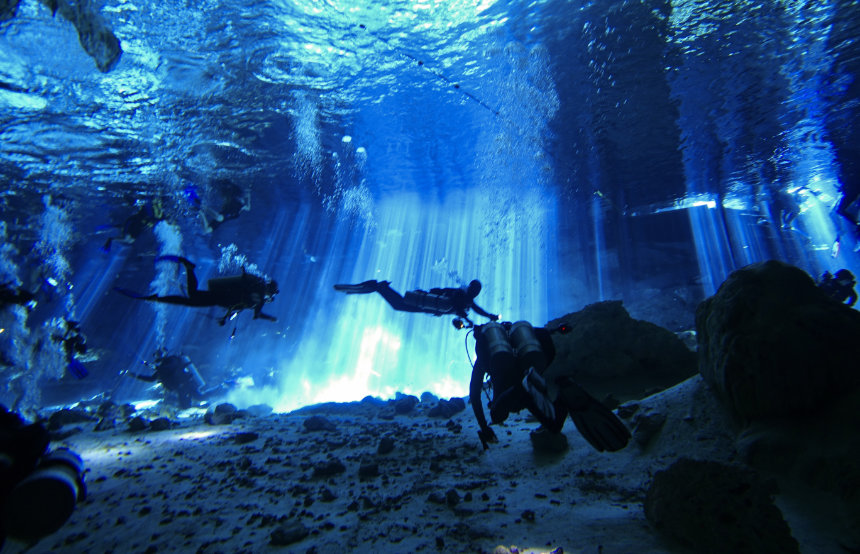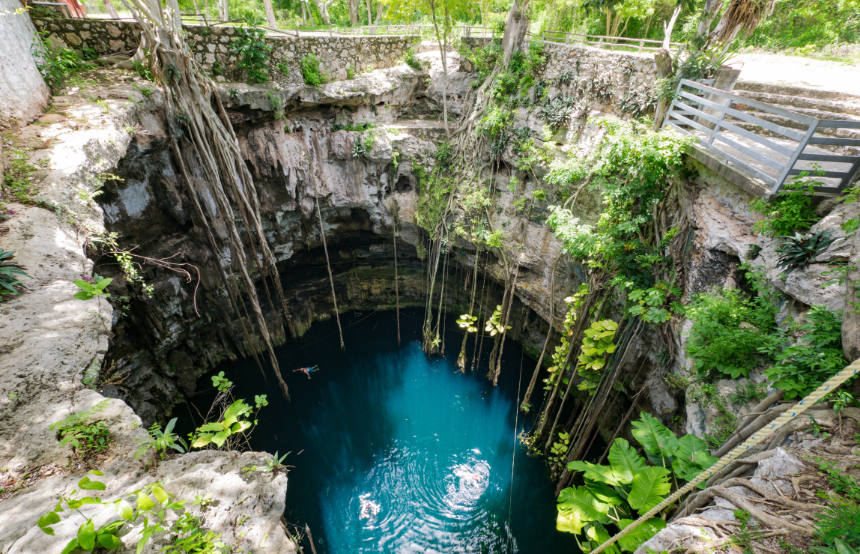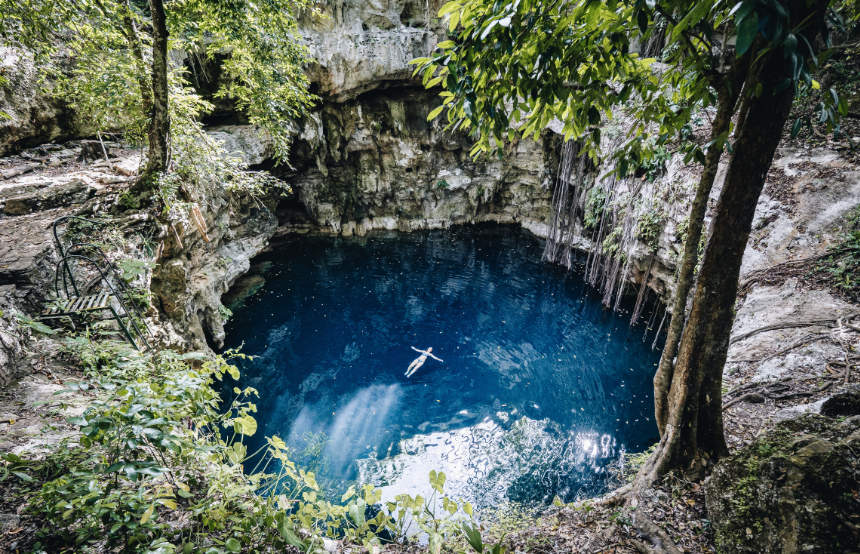Once venerated by the ancient Mayans as sacred water sources and sites of sacrificial offerings, cenotes are one of Mexico’s defining features and can be found floating at the top of many travellers’ bucket-lists. The natural sinkholes are formed from the collapse of soluble limestone rock, revealing tranquil groundwater below, and are synonymous with the Yucatán Peninsula, where the majority of the 6,000 or so in Mexico are found. While the country is known for its blissful beaches and turquoise-tinted ocean, cenotes are equally excellent choices for swimming and snorkelling. With so many to choose from throughout the country and each one wonderfully unique, we’ve compiled a list of our favourite cenotes in Mexico to guide you in the right direction.
Best for diving: Cenote Dos Ojos, near Playa del Carmen
Meaning ‘two eyes’ and so-called for its two connected sinkholes, Cenote Dos Ojos is one of the largest underwater cave systems in the Yucatán Peninsula, situated between Tulum and Playa del Carmen. The depth and complexity of the cave passages, as well as the extraordinary underwater visibility, make Dos Ojos an excellent cenote for diving. Spot colourful fish, fresh water turtles and myriad stalactites and stalagmites as you glide through the caverns.

Best for families: Cenotes Hacienda Mucuyché, near Merida
Located an hour from Merida, Hacienda Mucuyché is a hacienda and former plantation dating back to the 17th century. You’ll find two cenotes here: Cenote Carlota (named after the empress of Mexico, who was the first person to bathe here) and Cenote Azul Maya (a cave-style cenote). The abandoned hacienda is also worth visiting, and guided tours are offered for an insight into its history, making this an interesting family excursion.
Best for beauty: Cenote Ik-Kil, near Chichen Itza
Cenote Ik-Kil is one of Mexico’s most popular cenotes, and for good reason, as it’s also regarded as one of the most beautiful. Its steep walls are adorned with vines and flowers, which snake their way into the crystal-clear blue-hued water below. The cenote can get crowded due to its popularity, however it remains one of our favourite cenotes in Mexico and is certainly worth adding to your itinerary.

Best for swimming: Cenote Dzitnup, near Valladolid
Also known as Cenote Xkeken, Dzitnup exudes natural beauty and is ideal for swimming, thanks to its temperate water (around 25 degrees Celsius) and the lifeguard on duty. The closed-off nature of the cenote gives it a sense of mystery, with dangling tree roots and beams of dancing light reflecting off the turquoise water.
Best hidden gem: Cenote Oxman, near Valladolid
As a lesser-known option, this is undoubtedly one of our favourite cenotes in Mexico, as you can swim and snorkel in relative solitude. The open roof allows ample sunlight in – illuminating the crystal-blue water – and a highlight of the cenote is the rope swing, which makes for a more entertaining entry to the water and is ideal for any aspiring Tarzans.
Best for snorkelling: Cenote Manatí, near Tulum
Named after the manatees that once called this site home, Manatí is a snake-shaped cenote located on the Riviera Maya, near Tulum. It actually consists of a series of seven cenotes, linked by a channel which flows through mangroves. The snorkelling here is of particular note, with both fresh and salt water fish inhabiting its waters, and this is the only cenote in Mexico where you can experience both the ocean and a cenote simultaneously.

Best for luxury: Chablé Yucatán, near Merida
Undoubtedly the most luxurious on the list of our favourite cenotes in Mexico, Chablé Yucatán’s private cenote comes complete with its own spa, making it a truly once in a lifetime experience. Set among the jungles of the Yucatán Peninsula, the hotel itself is heavenly and boasts a freeform pool, jacuzzi and world-class cuisine. Experience the cenote by indulging in one of their Maya-inspired spa treatments.
Written by Luisa Watts
